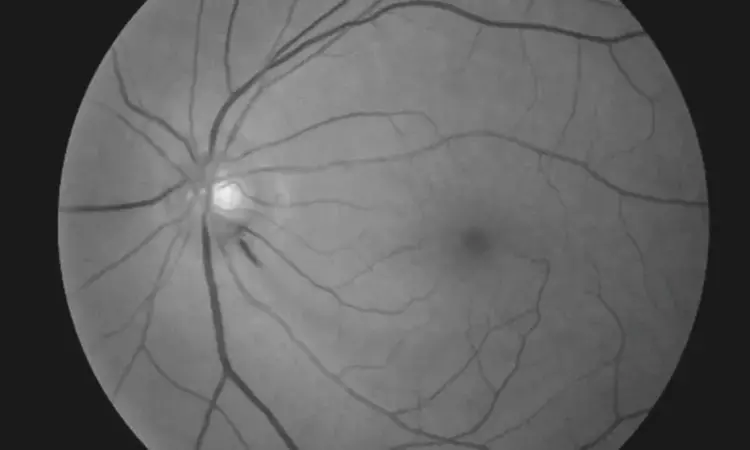- Home
- Medical news & Guidelines
- Anesthesiology
- Cardiology and CTVS
- Critical Care
- Dentistry
- Dermatology
- Diabetes and Endocrinology
- ENT
- Gastroenterology
- Medicine
- Nephrology
- Neurology
- Obstretics-Gynaecology
- Oncology
- Ophthalmology
- Orthopaedics
- Pediatrics-Neonatology
- Psychiatry
- Pulmonology
- Radiology
- Surgery
- Urology
- Laboratory Medicine
- Diet
- Nursing
- Paramedical
- Physiotherapy
- Health news
- Fact Check
- Bone Health Fact Check
- Brain Health Fact Check
- Cancer Related Fact Check
- Child Care Fact Check
- Dental and oral health fact check
- Diabetes and metabolic health fact check
- Diet and Nutrition Fact Check
- Eye and ENT Care Fact Check
- Fitness fact check
- Gut health fact check
- Heart health fact check
- Kidney health fact check
- Medical education fact check
- Men's health fact check
- Respiratory fact check
- Skin and hair care fact check
- Vaccine and Immunization fact check
- Women's health fact check
- AYUSH
- State News
- Andaman and Nicobar Islands
- Andhra Pradesh
- Arunachal Pradesh
- Assam
- Bihar
- Chandigarh
- Chattisgarh
- Dadra and Nagar Haveli
- Daman and Diu
- Delhi
- Goa
- Gujarat
- Haryana
- Himachal Pradesh
- Jammu & Kashmir
- Jharkhand
- Karnataka
- Kerala
- Ladakh
- Lakshadweep
- Madhya Pradesh
- Maharashtra
- Manipur
- Meghalaya
- Mizoram
- Nagaland
- Odisha
- Puducherry
- Punjab
- Rajasthan
- Sikkim
- Tamil Nadu
- Telangana
- Tripura
- Uttar Pradesh
- Uttrakhand
- West Bengal
- Medical Education
- Industry
Nocturnal Blood Pressure Dips Linked to Rapid Central Vision Loss in Normal-Tension Glaucoma: Study

Korea: Patients with normal-tension glaucoma (NTG) who experience pronounced drops in nocturnal blood pressure are at a significantly higher risk of rapid central visual field loss, a new study published in the American Journal of Ophthalmology has shown.
The research found that over half of NTG patients classified as “over-dippers” exhibited fast central visual field progression, emphasizing the need for careful monitoring in this high-risk group.
The study was led by Dr. Jimin Park from the Department of Ophthalmology, University of Ulsan College of Medicine, Asan Medical Center, Seoul, Korea, along with a team of colleagues. The investigators aimed to explore the link between nocturnal blood pressure fluctuations and the rate of central visual field deterioration in patients with early-to-moderate NTG, a common subtype of glaucoma characterized by optic nerve damage despite normal intraocular pressure.
In this prospective cohort study, 199 untreated NTG patients underwent 24-hour ambulatory blood pressure monitoring (ABPM) in their usual daily settings and were followed for a minimum of two years, with an average follow-up of 4.9 years. Based on their nighttime blood pressure patterns, participants were categorized as non-dippers, dippers, or over-dippers. Central visual field progression was measured using the mean total deviation of the 12 central points (MTD10), with “fast progression” defined as a decline of more than 0.5 dB per year.
The study led to the following findings:
- Over-dippers showed a mean MTD10 decline of -0.53 dB/year, faster than dippers (-0.27 dB/year) and non-dippers (-0.23 dB/year).
- 60% of over-dippers experienced fast central visual field progression.
- 23.5% of dippers and 19.8% of non-dippers experienced fast central visual field progression.
- The percentage of nocturnal mean arterial pressure (MAP) dip was identified as a significant predictor of rapid central visual field loss, with an odds ratio of 1.062.
These findings highlight a crucial clinical insight: pronounced nocturnal blood pressure dips can accelerate central visual field deterioration in NTG patients. Central vision is vital for daily tasks such as reading and recognizing faces, and rapid loss in this area can substantially impair quality of life. The study suggests that ophthalmologists should closely monitor NTG patients exhibiting significant nocturnal BP reductions and consider integrated management strategies that address both ocular and systemic cardiovascular factors.
While the study provides valuable evidence linking blood pressure patterns to glaucoma progression, the authors note that further research is needed to determine whether interventions to stabilize nocturnal blood pressure can slow visual field loss. Nevertheless, the current findings underscore the importance of personalized care in NTG, particularly for patients at risk of rapid central visual field decline.
Dr. Park and colleagues’ research demonstrates that over-dipping during sleep is a key risk factor for accelerated central visual field loss in NTG, affecting more than half of these patients. Early identification and vigilant monitoring of at-risk individuals could play a critical role in preserving central vision and preventing functional impairment in glaucoma patients.
Reference:
Park, J., Song, W. K., Yoon, J., Kim, K. E., & Kook, M. S. (2025). Fast Central Visual Field Progression in Patients with Normal-Tension Glaucoma and Nocturnal Blood Pressure Dip. American Journal of Ophthalmology. https://doi.org/10.1016/j.ajo.2025.09.018
American Journal of Ophthalmologynormal-tension glaucoma (NTG)Nocturnal Blood Pressure DipFast Central Visual Field
Source : American Journal of OphthalmologyDr Kamal Kant Kohli-MBBS, DTCD- a chest specialist with more than 30 years of practice and a flair for writing clinical articles, Dr Kamal Kant Kohli joined Medical Dialogues as a Chief Editor of Medical News. Besides writing articles, as an editor, he proofreads and verifies all the medical content published on Medical Dialogues including those coming from journals, studies,medical conferences,guidelines etc. Email: drkohli@medicaldialogues.in. Contact no. 011-43720751
Next Story


